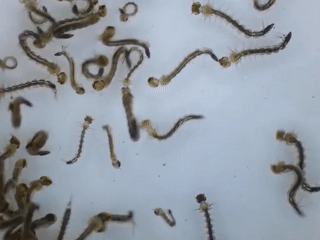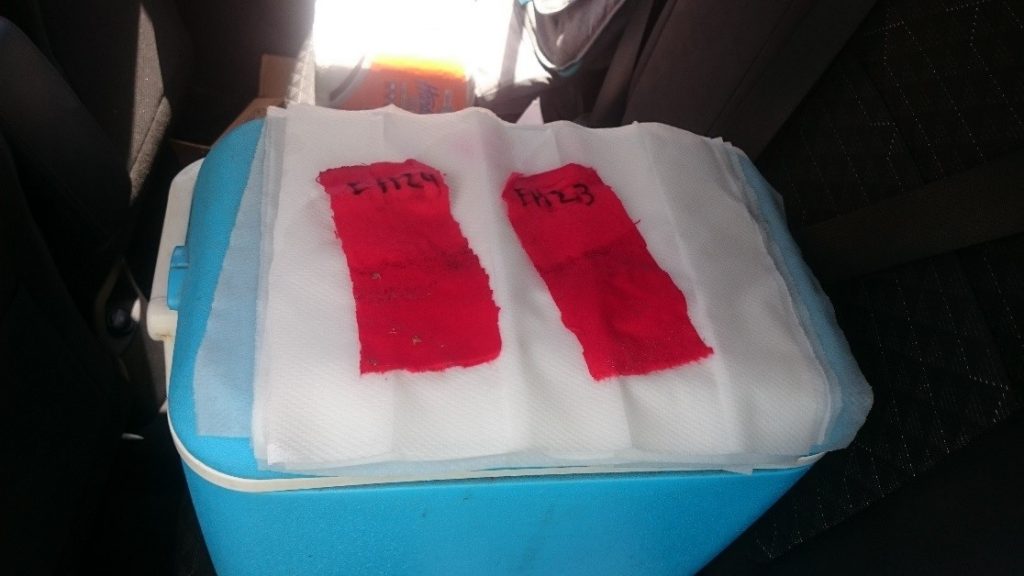
Collecting fresh mosquitoes | PEARG in the field
Words: Tom Schmidt
Photos: Tom Schmidt and Perran Ross
At PEARG, we have a great interest in environmental pests and how to deal with them. One of these pests is the mosquito Aedes aegypti, which causes catastrophic damage throughout the world’s tropical zone. Aedes aegypti spreads viruses such as dengue, Zika and chikungunya, and is highly adept at invading new regions around the world.
For PEARG to continue our study of Aedes aegypti, we must at times head into the field to collect new samples. In Australia, this means a trip to northern Queensland – the only Australian habitat for the species. I spent four weeks collecting Aedes aegypti in Cairns in February and March, 2018, and this post will detail how it was achieved.
There are many ways to collect Aedes aegypti, and the choice of method will depend on the questions that are to be investigated and the constraints of the study design. In our case, we were interested in collecting a large sample of mosquitoes across a large area, and we wanted the sampling in certain areas to be performed at the same time point as in other areas.
With such constraints, the obvious choice for sampling was to use ovitraps (egg-traps). These devices are cheap and simple to construct, and can be deployed en masse throughout an area, left alone, then retrieved sometime in the future. The ovitraps I built were as follows: take a 1L black plastic bucket, fill it halfway with water, and place 4 grass pellets inside. Then attached a strip of red felt to the side with a peg, so that the felt droops into the liquid.
Female mosquitoes looking for a place to lay their eggs are attracted to the grass pellet/water mixture. They lay their eggs at the waterline where the felt meets the liquid. As Aedes aegypti eggs take a while to hatch into larvae, an ovitrap can be retrieved about a week after deployment with plenty of unhatched eggs stuck to the felt, and the trap can then be quickly redeployed with a fresh felt.
 An ovitrap, featuring 1L black bucket, grass pellet/water mixture, red felt and peg
An ovitrap, featuring 1L black bucket, grass pellet/water mixture, red felt and peg
To set up these ovitraps, we first choose an appropriate place in Cairns. This will usually be a dwelling, but some businesses are also suitable for this. The place ideally should have no dog (dogs often destroy the traps) and should have some covered area in which to place the trap (if placed in the open the trap may overflow with rainwater).
The below pictures detail the deployment and retrieval of ovitraps from a dwelling. First, we pick a good place to set a trap.
We then set our traps. We place two of these around each dwelling, under shade. An example of such a trap is pictured below (the ovitrap is in the centre of the picture). Ideally we deploy these where they won’t get in anyone’s way, but are not far from human activity.
 An ovitrap (centre of picture) beneath an awning next to a door
An ovitrap (centre of picture) beneath an awning next to a door
One week later, we remove the trap and collect the felts. These are dried on paper towels then placed in an esky to prevent overheating. Below is a picture of the two felts from the above dwelling. Looking closely, you can see a black band through the middle of the felts. These are the eggs of (likely) Aedes aegypti, and have been laid at the water line. The water has evaporated over the week, and the eggs are now mostly dry.

Red felts from two ovitraps, one week after deployment. They are drying on paper towels. Mosquito eggs appear as a black band through the middle of each felt
The eggs are then conditioned to optimise their hatching at a later date. Each is laid out on some paper towel, and covered loosely with a plastic box to maintain a humid enviroment. Drying too quickly can prevent the eggs from hatching later, and drying too slowly may make them hatch out too soon. In four weeks of trapping we collected 800 felts worth of eggs.

These are plastic boxes containing felts from ovitraps. The felts are laid out on paper towel, and the boxes are loosely sealed to allow moisture to escape in a controlled fashion
Once the felts have dried and the eggs are properly conditioned, they are fine to transport back to the PEARG lab for whatever purpose we have for them – breeding experiments, preserved genetic material, an influx of new alleles into our current lab stocks, etc.
Hatching the eggs is very simple – we place each felt into a small container and add water. Hatch times depend on a set of variables but larvae should appear after a few hours. The below GIF shows some recently-hatched Aedes aegypti larvae in the PEARG lab. To find out how we use larvae like these to develop new ways of combatting Aedes aegypti and the viruses it spreads, you can read through posts on this blog or take a look at some of our publications.
